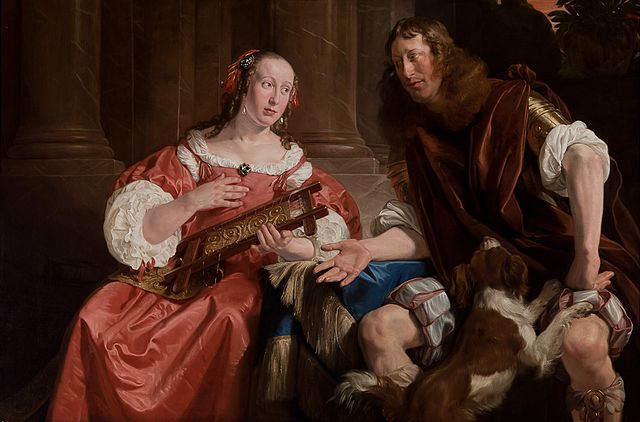Jan de Bray was a Dutch Golden Age painter. He lived and worked in Haarlem until the age of 60, when he went bankrupt and moved to Amsterdam.
De Bray and his wife as Ulysses and Penelope, 1668
In his family portrait depicting the banquet of Antony and Cleopatra at the moment when Cleopatra puts her earring in the wine, Jan is depicted standing on the left. In the earlier version, the sons look up to the father, and in this version, the brothers (all since deceased except for Dirck) look at Jan.
The Painter's Guild in 1675. Jan de Bray's self-portrait is the second from the left, and his brother Dirck de Bray is standing upper right.
Cleopatra puts the pearl in the wine, Royal Collection, 1652 (first version)
Dutch Golden Age painting
Dutch Golden Age painting is the painting of the Dutch Golden Age, a period in Dutch history roughly spanning the 17th century, during and after the later part of the Eighty Years' War (1568–1648) for Dutch independence.
Johannes Vermeer, The Milkmaid (1658–1661)
Frans Hals' tronie, with the later title Gypsy Girl. 1628–30. Oil on wood, 58 cm × 52 cm (23 in × 20 in). The tronie includes elements of portraiture, genre painting, and sometimes history painting.
Paulus Potter, The Young Bull (1647); 3.4 metres wide. An unusually monumental animal painting that challenges the hierarchy of genres.
The Haarlem Painter's Guild in 1675, by Jan de Bray, whose self-portrait is the second from the left







